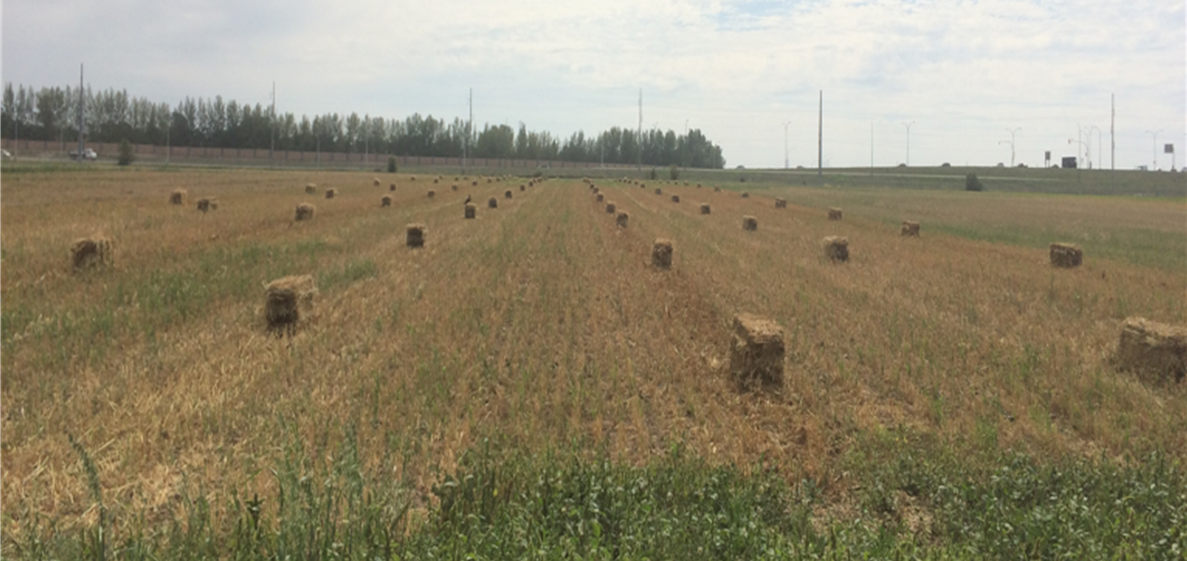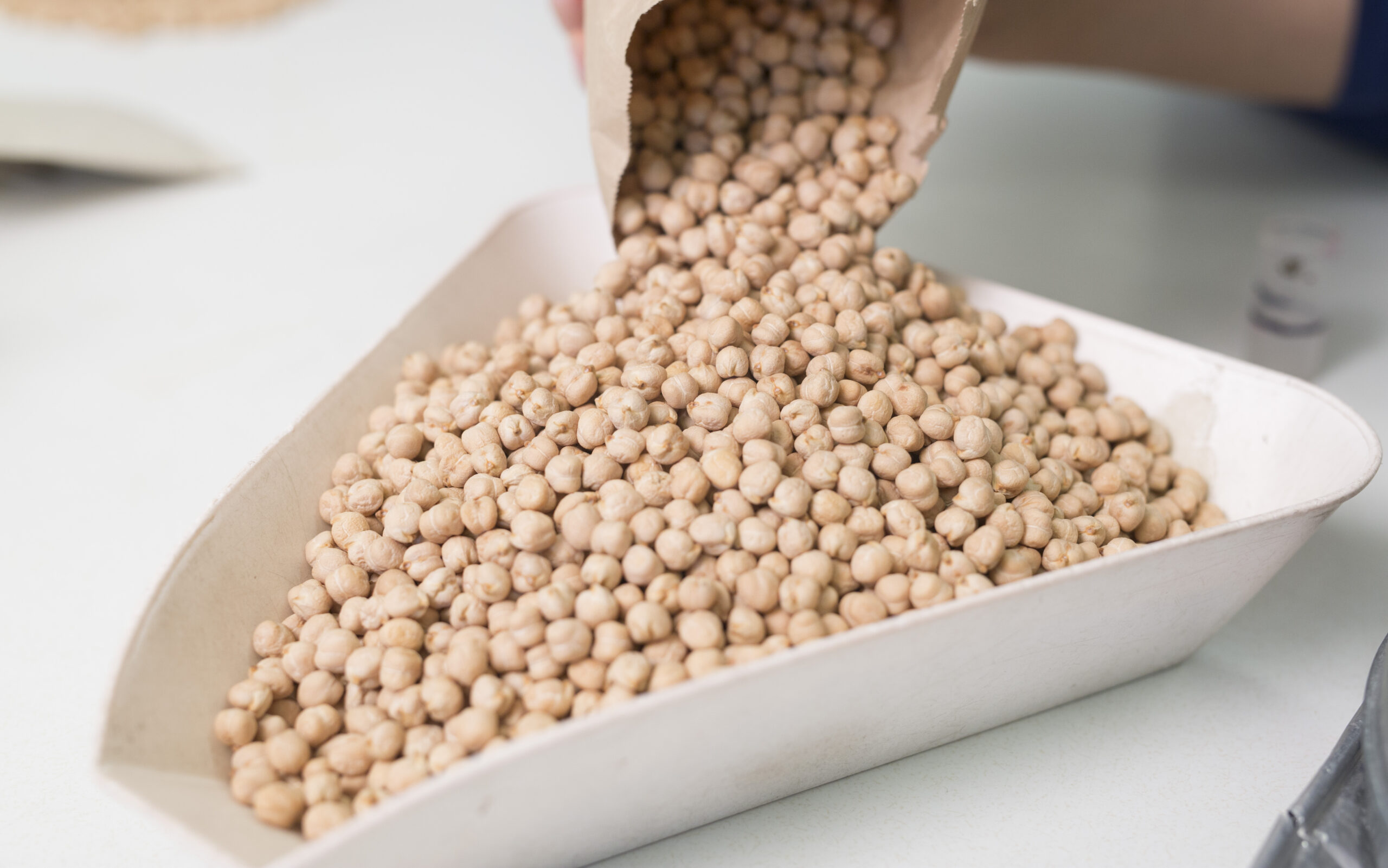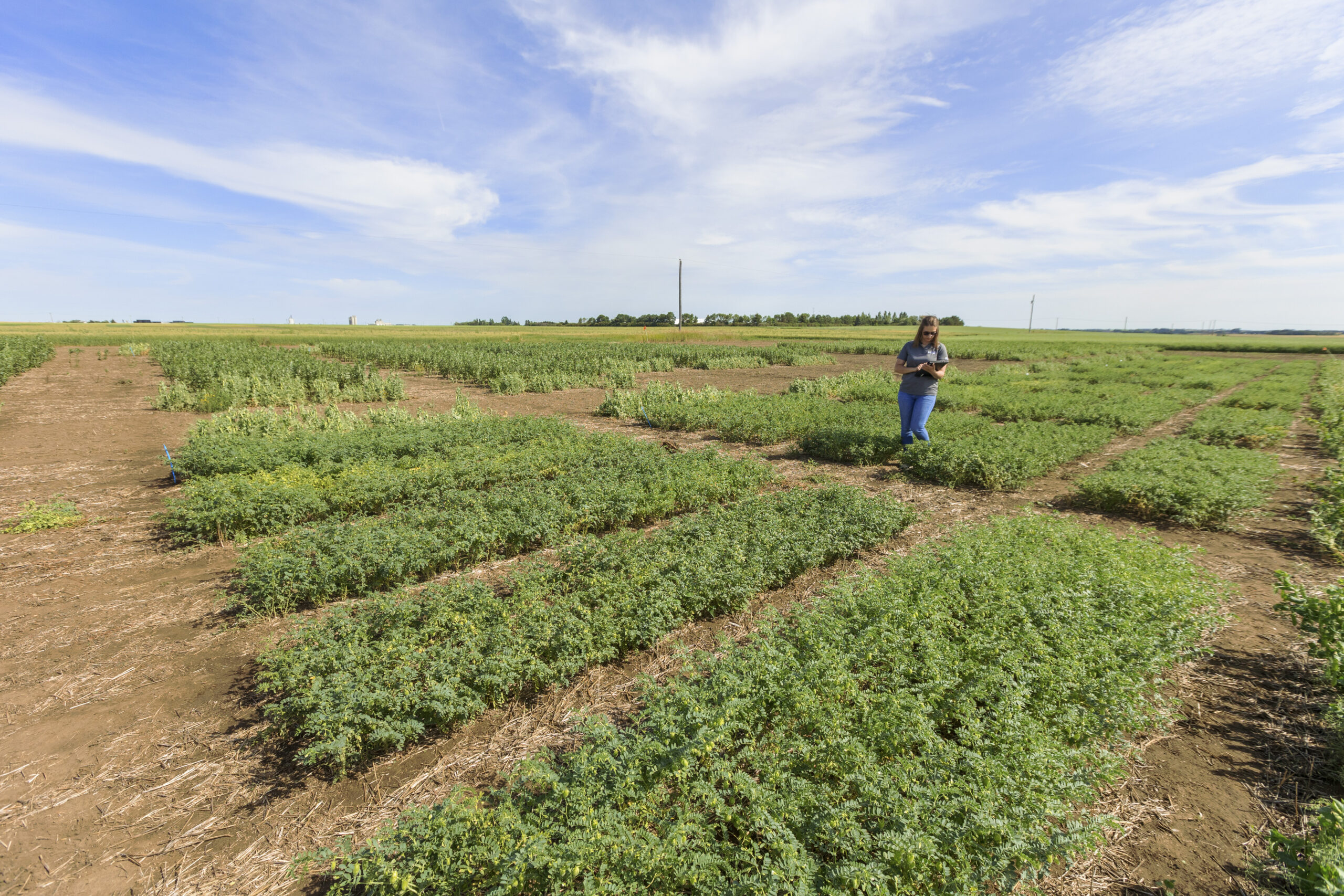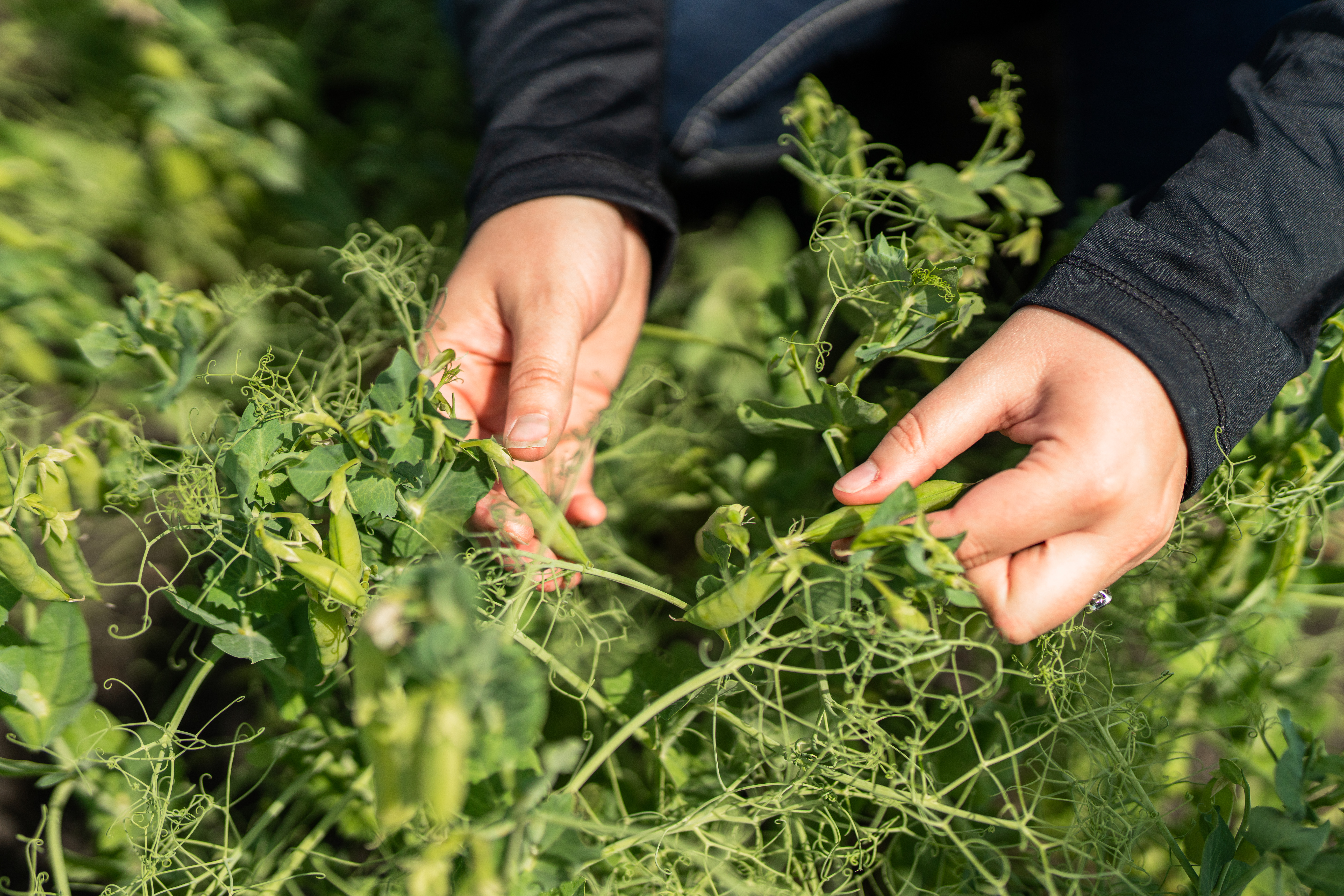By Donna Fleury, P.Ag.
Forage pea varieties are similar to traditional field peas in many respects including agronomic considerations. However, plant breeding priorities for forage pea varieties focus on smaller seed size, increased biomass, and good lodging resistance, rather than on grain yield. Forage peas are grown for their biomass yield, digestibility, protein, and relative feeding values, primarily for the beef and dairy industries. Newer forage varieties produce on average four to five tonnes per acre of forage dry matter, similar to forage barley, but with greater protein concentration.
Plant breeder Tom Warkentin at the University of Saskatchewan’s Crop Development Centre has released a few specialty forage pea varieties over the last decade. Some of the forage pea varieties include CDC Tucker, CDC Leroy, and CDC Horizon, with the most recent release CDC Jasper in 2016. CDC Jasper is in the seed multiplication stage and not yet widely available. Breeder seed of all four varieties was released to Select Seed growers through the Saskatchewan Pulse Growers Variety Release Program.
Older forage peas tended to have long vines, normal leaf-type, purple flowers, and produced a lot of biomass. In the 1970s, Trapper pea, a white flowered variety, was used as forage. Another variety, 40-10, which is still grown today, has a very small seed size and produces a lot of biomass. However, these older varieties have an indeterminate growth habit and tend to lodge and fall over at the flowering stage, making them more difficult to handle at harvest. The newer forage varieties produce as much or more biomass as 40-10, but are easier to manage and have better lodging resistance.
As part of Warkentin’s forage pea program, elite trials are conducted to evaluate pea varieties for forage potential, using 40-10 as the check variety. Generally, newer forage pea varieties tend to be semi- leafless, have more basal branching, a determinate growth habit, and increased biomass.
Desirable traits in forage/silage pea varieties include:
- High, dry matter (biomass) yield
- High crude protein percentage, low neutral detergent fibre percentage, low acid detergent fibre percentage, and high relative feed value, to enhance feed value
- Small seed size to reduce planting costs
- High grain yield to improve efficiency of seed production
- Low lodging score to improve the efficiency of grain and forage harvest
- Favorable ensiling qualities
The trials show that forage pea is capable of very high biomass yield, similar to, or exceeding, that of forage barley and other annual cereals. As well, several test entries and checks exceeded variety 40- 10 in protein concentration and relative feed value, which ranged from 123-161, indicating the high feed value of pea forage.
The goal of forage seed production is to keep the seeding costs down, therefore smaller seeded varieties are important. Producers will benefit from using the newer forage varieties as they become available, but if seed availability is a problem, traditional pea varieties with higher biomass yield such as CDC Meadow, a yellow variety, may be suitable. Warkentin expects that in the future seed sellers may start to offer blended forage pea and cereal mixtures, which is currently more common in the United States.
Forage Mixtures: Growing Legumes and Cereals in Combination for Greenfeed and Silage
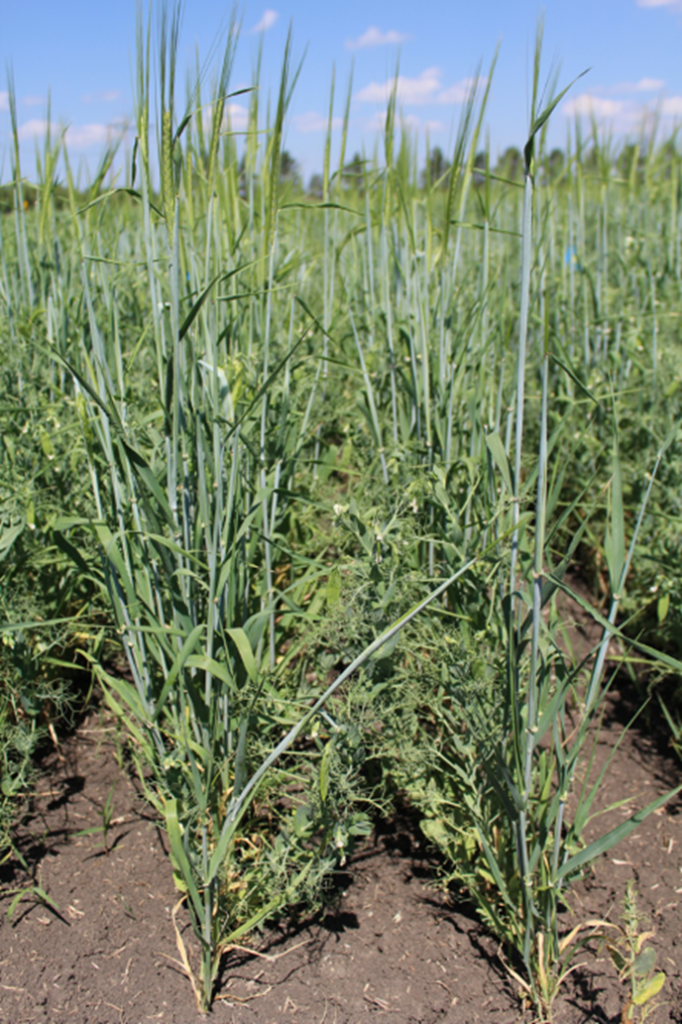
Source: Amara Gungaabayer, University of Saskatchewan
There is an increasing interest in growing combinations of annual legumes and cereals together in an intercrop for greenfeed and silage, rather than as individual crops. Intercropping combinations of forage peas and barley or oats can be used to improve forage quality and protein in greenfeed and silage crops. However, there are still questions about the right mixtures, seeding rates, and harvest timing.
In 2015, Trevor Lennox, Regional Forage Specialist with the Saskatchewan Ministry of Agriculture in Swift Current led a one year Agriculture Demonstration of Practices and Technologies (ADOPT) project to try to answer questions about forage combinations using cereals and forage peas. The project was conducted at four locations across Saskatchewan, including Swift Current, Melfort, Yorkton, and Scott. Thirteen treatments were compared at each site including monocultures of peas (CDC Horizon and 40-10), barley, and oats, as well as pea/barley and pea/oat mixtures at two different seeding rates.
Although Lennox cautions the results were based on only one year and will vary depending on weather, growing conditions and geographical area, the demonstration showed that the right combination of pea/cereal performed better than peas grown alone. The seeding rate for the highest overall biomass yielding mixture was 100 per cent for peas, or two bushels per acre (bu/ac) and 30 per cent of cereals full seeding rate, or 3/4 to one bu/ac of barley or oats. In contrast the lowest biomass yielding forage treatment was CDC Horizon pea, seeded without a cereal crop.
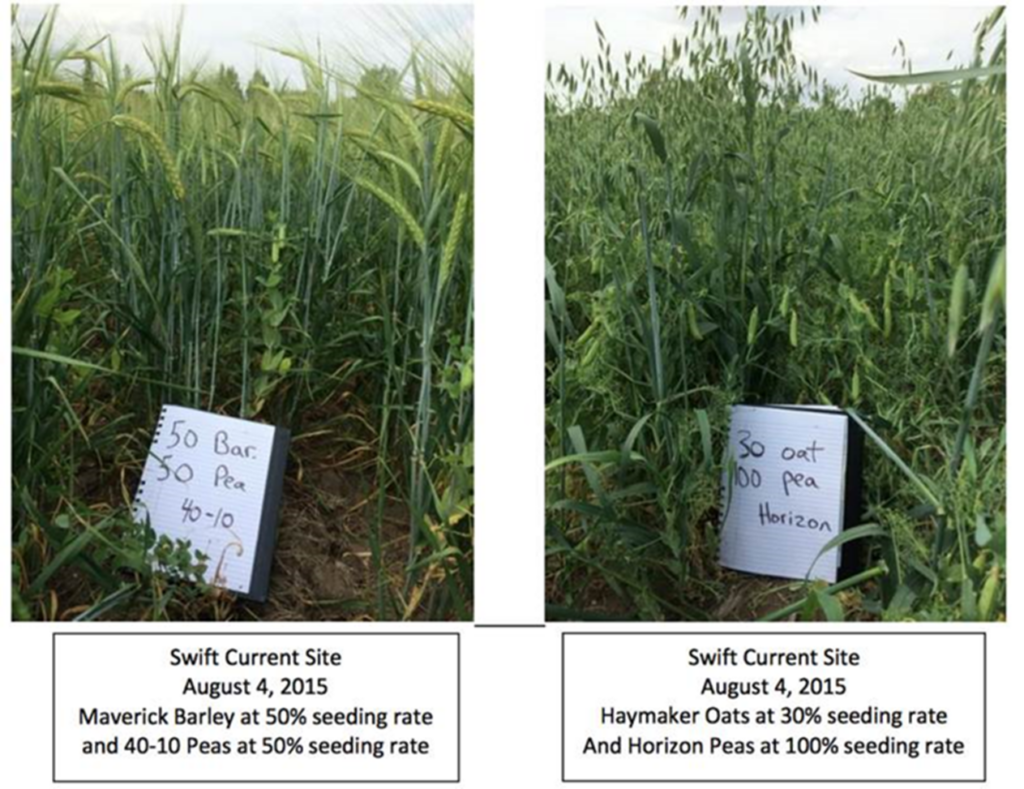
Source: Trevor Lennox, Saskatchewan Ministry of Agriculture
The harvest date for the pea/cereal mixtures for greenfeed was based on the stage of the cereal in the mix (barley—milk to soft dough and oats—early to late milk), while monocrop peas were harvested when the pods on the bottom two nodes of the peas were full and plump. For silage, the crops would be harvested earlier. Similar to alfalfa/grass mixtures, peas, like alfalfa, will take a little longer to dry down in the mix as the stems hold moisture longer. These mixtures are not recommended for swath grazing, as the peas break down more quickly and do not weather very well.
Overall the forage pea mixtures generated more protein per acre than straight cereals, making pea mixtures a good choice for bumping up protein and quality in forages. Forage producers looking for improved value and quality can look to pea/cereal mixtures as a good strategy to include in their operation. In these mixtures, the pea provides nitrogen for the cereal crop, while weed control and other input costs tend to be lower. Another benefit is that generally legumes do not accumulate nitrates, which can often be a challenge with other annual later seeded cereal crops.
Building on this demonstration project, a larger three-year project led by Bill Biligetu at the University of Saskatchewan was initiated in 2016 to evaluate the performance of promising forage pea varieties grown in mixture with forage barley or forage oats, as these are the typical use of forage peas in dairy and beef feed lot applications. The results of these projects will be available over the next couple of years.
Feeding Study: Including Peas/Oats and Peas/Barley Intercrops in Beef Rations
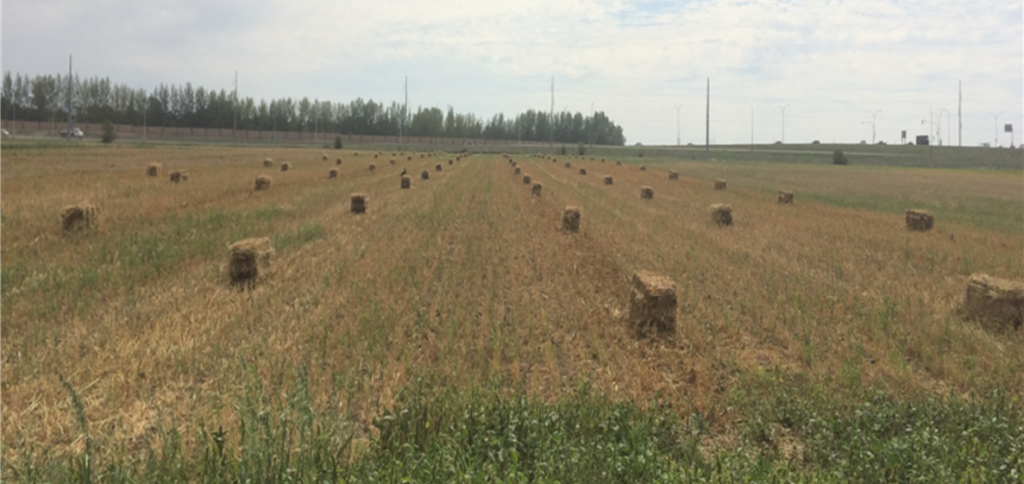
Source: Alex Pursley, University of Saskatchewan
Penner is leading a feeding study comparing peas, oats, and barley forages, which is set to begin in November 2017. The feeding study will be conducted on a group of replacement heifers fed different rations, including oat or barley hay alone, or blended with either 20 per cent or 40 per cent pea forage produced for the study during the 2017 growing season. The feeding study will take about a year, with results available in early 2019.
Replacement heifers, as well as backgrounding calves, are good classes of cattle that can benefit from a legume forage like peas. Replacement heifers require more protein than mature cows for example, so feeding an oat or barley only forage might require the addition of an additional protein supplement in the diet to balance the ration. Some of the more common protein supplements include canola meal or distillers grains, which can be costly. Therefore, the increased protein benefits and improved digestibility of a legume forage can reduce the requirement and cost of supplemental protein.
Penner notes that the key is to match the forage cropping system with your cattle class. A legume/cereal is a good solution for meeting nutrient demands of replacement heifers or backgrounding calves. However mature cows do not require additional protein so unless there are other reasons for including legume forages in the rations, a pea forage may not suit that class of livestock. Some area dairy farmers have also been evaluating peas as an alternative to alfalfa or faba beans for silage. Producers looking to boost protein levels in their beef or dairy rations, may want to consider adding peas to their forage mixes. Watch for final results from both the forage performance evaluation and feeding study in 2019.
Published November 2017
